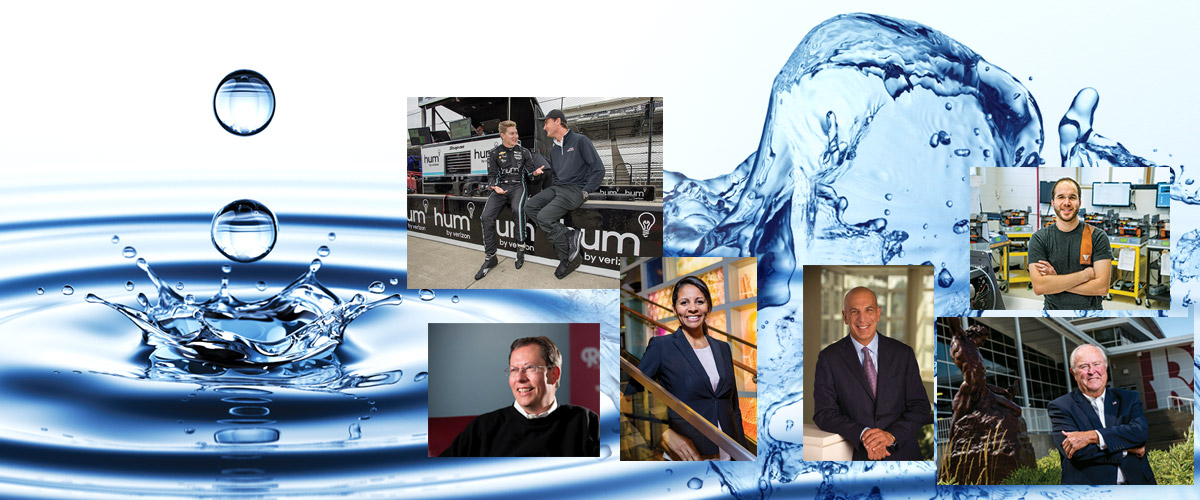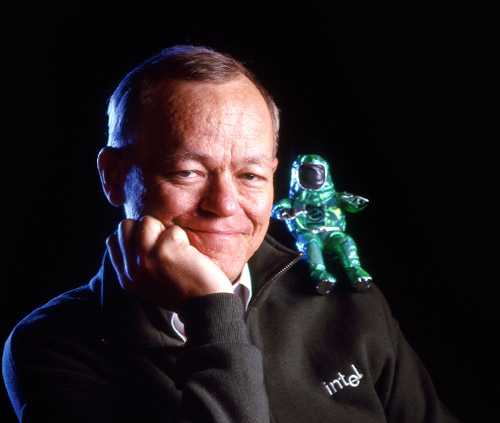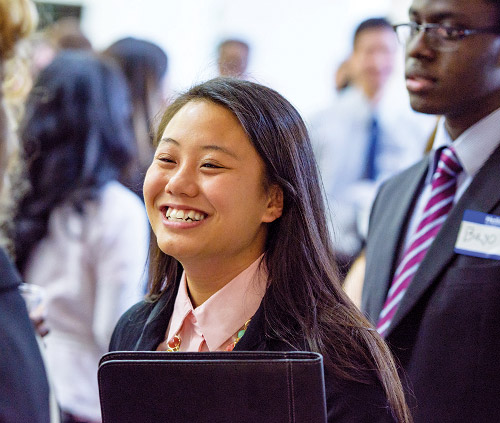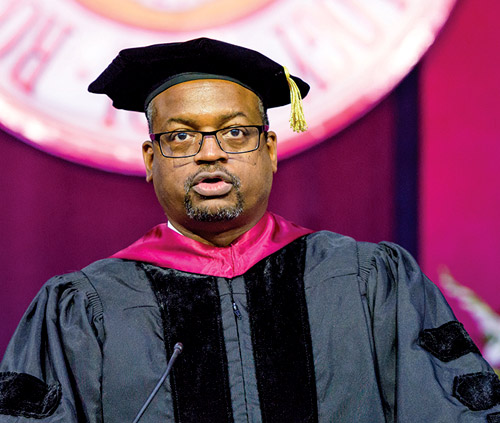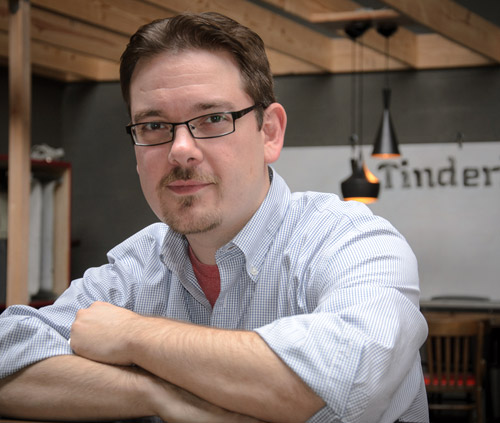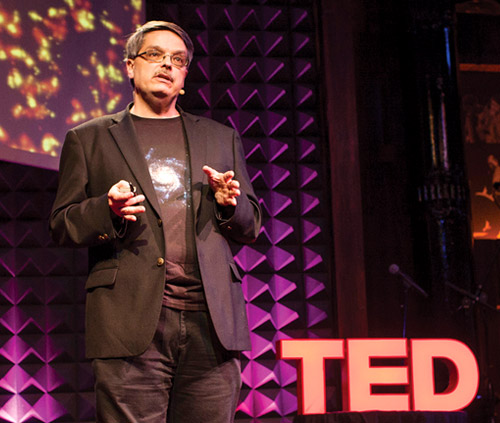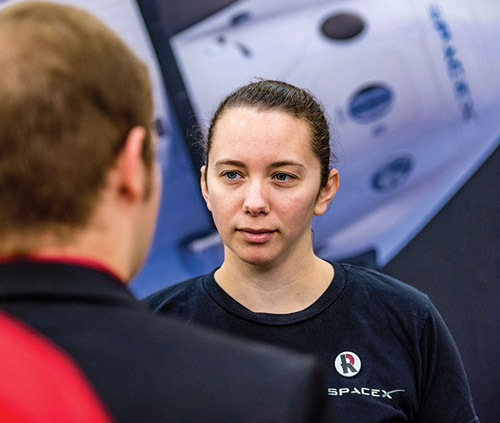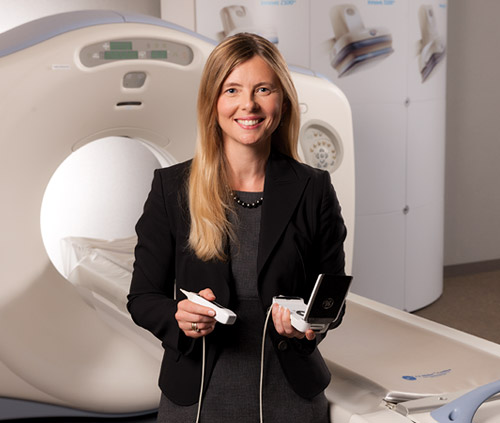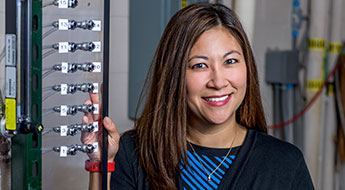Innovators
Bernie Vonderschmitt, a 1944 electrical engineering graduate, contributed to the development of the semiconductor and color television, two of the top technological achievements in the 20th century. After spending 34 years as a researcher with RCA Corp., he pioneered the programmable semiconductor chip and founded the Silicon Valley-based startup Xilinx Inc., the first company to separate the design of chips from its manufacturing practice.
Gary Boone helped pave the way for microcomputing, inventing the world’s first 8-bit microprocessor and single-chip microcontroller (for Datapoint), engine and powertrain electronic control systems (for Ford Motor Co.), and microcontrollers for calculator and watch applications (Litronix). The 1967 electrical engineering alumnus also worked for Texas Instruments, General
Computer and Atari, managing the team that designed the graphics chip at the heart of Atari’s popular computer game console.
Lawrence Giacoletto, a 1938 alumnus, created the groundbreaking hybrid-pi transistor model, and played a key role in the development of the color television, hybrid electric vehicles and other modern-day innovations. Listed among the American Men of Science, the 1938 electrical engineering graduate also authored “The Electronics Designers’ Handbook.”
Chris Mack is a leading expert in semiconductor lithography who has spent the past 20 years training more than 2,000 lithographers from more than 200 countries throughout the world. The 1982 alumnus currently is writing, teaching and consulting in lithography.
John Pies created the first commercially sold transistor radio, the Regency TR-1, in 1954. It kicked off a worldwide demand for small and portable electronic products, such as the personal computer, that have become a part of people’s everyday lives. Pies co-founded Regency Electronics Inc. in 1945.
Roy Primus is the senior principal engineer for General Electric’s combustion systems division.
He has been honored with the Global Research Tony Nerad Technical Achievement Award for sustained technical contributions over his career.
Tony Cooprider has been part of a variety of groundbreaking automotive initiatives as the most senior technical specialist within Ford’s electronic components division.
The Corporate Suite
Jim Umpleby became chief executive officer of Caterpillar Inc. Jan. 1, 2017. Caterpillar is the world’s leading heavy equipment manufacturer and one of the 30 stocks comprising the Dow Jones Industrial Average. Since taking over the helm, the 1980 mechanical engineering graduate and his management team have announced a new strategy to profitably grow the company, which has emerged leaner and nimbler from the longest downturn in its 92-year history.
Darin Moody is senior vice president of Eli Lilly and Co.’s global active pharmaceutical ingredient, dry products manufacturing and continuous improvement division. The 1987 chemical engineering alumnus has spent his entire career with the Indianapolis-based company, in leadership roles at Lilly’s manufacturing plants throughout the world.
Gregg Lowe has utilized his successful leadership skills to become president and CEO of Cree, a market-leading innovator of lighting-class LEDs and lighting products. The 1984 electrical engineering alumnus also was successful as a leader of Freescale Semiconductor and an executive of Texas Instruments’ analog business.
Rod Schrader, a 1984 civil engineering graduate, has brought innovation and new business practices as chairman and CEO of Komatsu America Corp., a manufacturer and supplier of earth-moving equipment.
Tonya Combs is utilizing her background in chemical engineering (2001) and law (Indiana
University, 2006) as senior director and general patent counsel for Eli Lilly and Company’s biomedicines division. She also is a fellow of the Intellectual Property Owners Association and member of Corporate Counsel Women of Color.
Steven McCracken served as chairman and CEO of Owens-Illinois Inc. for just a short time (2004 through 2006) before his death, but his management decisions helped the Fortune 500 glass container company return to profitability after losing market share for several years. The 1975 mechanical engineering graduate also had a 30-year career in marketing at DuPont.
Leroy Wilson was president of AT&T from 1948 to 1951, where the 1922 civil engineering alumnus helped bring the company out of financial difficulties through innovation and encouraged the development of Bell Laboratories. This brought new advances into the communications industry.
Jeff Harrison is president and CEO of Citizens Energy Group, a utility company providing services to approximately 400,000 customers in central Indiana. The 1989 electrical engineering alumnus joined the company in 2003 as director of market development, and progressed through positions of increasing responsibility in manufacturing and engineering.
The Public Sector
Al Yee, a pioneer in the design of precast concrete components for land and sea structures, was a consultant on the design and construction of such iconic building projects as the USS Arizona Memorial, one of the most visited and admired sites in America, and the 70-story Sail @ Marina Bay tower in Singapore. Yee, a 1948 civil engineering alumnus, was named a Titan of the precast/prestressed concrete industry and recognized by the American Society of Civil Engineers and Prestressed Concrete Institute.
Marshall Goldsmith is sought by executives of Fortune 500 companies and world leaders as the No. 1 Leadership Thinker and No. 1 Executive Coach, named both by Thinkers50, sponsored by the Harvard Business Review. The 1970 graduate is a best-selling business author of “What Got You Here Won’t Get You There” (2007), “MOJO: How to Get It, How to Keep It, and How to Get It Back If You Lose It” (2010) and “Triggers” (2015).
Fujio Matsuda found success as president for a decade (1974 to 1984) at the University of Hawaii (the first Asian-American to lead a major U.S. university). Earlier, as head of the Hawaii State Department of Transportation, the 1949 civil engineering alumnus contributed to the development of the state’s transportation system (including highways, airports and shipping ports)—an achievement that earned him membership in the National Academy of Engineering in 1974.
Entrepreneurs
A search for the definition of a serial entrepreneur may find Mike Hatfield mentioned prominently. After all, the 1984 graduate has four successful California-based startup enterprises in his portfolio, including Cyan, a global supplier of software defined networking tools (acquired by Ciena); Calix, a leading provider of high-speed access systems for communications service providers; and Cerent, a high-speed fiber optics systems company (acquired by Cisco for $7 billion). He also has served in management roles for Ameritech.
Felda Hardymon is a partner in Bessemer Venture Partners’ Cambridge, Mass., office whose successful investments have included American Superconductor, African telecommunications provider Celtel, the MCAD leader Parametric Technology, and retailers Sports Authority and Staples. The 1969 math alumnus is a former endowed professor and researcher at Harvard Business School.
Jeff Ready, a 1996 computer science alumnus, ranked on CRN’s List of the Top 25 Innovators of 2017 for his contributions as co-founder and CEO of Scale Computing, the market leader for hyperconverged infrastructure built for the information technology departments at midsize companies.
Will Ackerly was named to Fortune’s 2015 40 Under 40 list of most influential young people in business after the former National Security Agency technologist founded Virtru, a Washington, D.C.-based startup that specializes in providing encryption services to businesses and private computer users. He is a 2004 electrical engineering graduate.
Andrew Lee, a 2006 alumnus, co-founded the San Francisco database startup Firebase and is now its director of engineering after it became part of the Google Cloud Platform. Firebase is a growing high-tech player, giving developers a tool to easily sync data across web and mobile applications.
Dustin Sapp has moved his technology passions west as chief operating officer of Formstack, based in Colorado, after spending 15 years as a successful entrepreneur in Indianapolis. The 2001 computer engineering alumnus was named the Indiana Chamber of Commerce’s Indiana Vision 2015 Dynamic Leader of the Year for his efforts as co-founder of Octiv, previously known as TinderBox. He also co-founded voice technology platform Vontoo and Nolnk, a medical device sales solutions company.
Jeff Gilbert has been leading and delivering technology solutions for more than 26 years. In
1988, the 1985 mechanical engineering alumnus (with a master’s degree in 2006) co-founded Carmel, Ind.-based Software Engineering Professionals with three other Rose-Hulman alumni to bring an engineering approach to software development. The company builds systems and products for several global clients.
Pioneers
Abe Silverstein set the foundation for America’s manned space missions that eventually put a man on the moon, as NASA’s first director of space flight programs (from 1958 to 1969), and was the inspirational leader of the Lewis Research Center in Cleveland, Ohio. He is credited with starting the Mercury, Gemini, and Apollo space programs, and gained public and government support for space exploration. The 1929 mechanical engineering alumnus was inducted posthumously into the National Aviation Hall of Fame in 2015 and awarded the acclaimed Guggenheim Medal.
Ernest Davidson received the National Medal of Science and is a member of the National Academy of Science and American Association for the Advancement of Science for his groundbreaking work that led to the field of computational quantum chemistry. The 1958 chemical engineering alumnus and retired University of Washington chemistry professor has authored research papers that have appeared in more than 400 scholarly publications.
Don Lincoln a senior scientist in the area of particle physics at Chicago’s Fermi National Accelerator Laboratory, contributed to the discovery of the Higgs boson, possibly the last missing piece of the Standard Model of particle physics. The 1986 physics and math graduate has spent more than 20 years making the world of subatomic particles accessible to the public through his lectures, books, videos and articles.
Fred Garry received America’s highest honor for science and technology, the National Medal of Technology Award, for his career achievements that helped General Electric become a world leader in jet engine manufacturing. The 1951 mechanical engineering alumnus led GE’s military engines division and its corporate engineering sector, and advocated expanding engineering opportunities for women and minorities.
Aerospace
Dick Osburn provided a sure and steady hand over ground navigation at NASA’s Mission Control for 11 Apollo missions, including the historic Apollo 11 moon landing. He was the first controller to report to flight director Gene Kranz a spacecraft anomaly on Apollo 13, which resulted in the mission being aborted (documented in the movie “Apollo 13”). The 1967 math alumnus also supported Skylab and Space Shuttle missions, and was head of NASA’s ground navigation section from 1980 to 1985. He later moved to Rockwell Space Operations and worked on Space Shuttle missions until his retirement in 2003.
Don Fordyce and Richard Wegrich helped create key components for the Hubble Space Telescope, which has provided a glimpse into deep space. Fordyce, a 1956 mechanical engineering alumnus, was brought in to manage the Hubble program after having a successful career as vice president of Fairchild’s space systems division. Wegrich, a 1958 mechanical engineering graduate, directed development of the temperature control system for the telescope’s eye piece.
James Dunlop developed the nickel-hydrogen battery that powered satellites, the Hubble Space Telescope and International Space Station. His prototype battery is on display at the Smithsonian Institution.
As engineers at Lockheed Martin, Nicholee (Page) Nietch and Karl Ammerman designed key elements of NASA’s Juno space probe that is orbiting Jupiter. Nietch, a 2001 alumna, also worked on NASA’s Spitzer Space Telescope, Mars Odyssey and the Mars Reconnaissance Orbiter. Ammerman graduated in 1996.
Steven Schmitz is a senior manager for SpaceX, overseeing the design and analysis of avionics mechanical systems for Falcon 9 and Dragon space flight vehicles. He is a 2007 mechanical engineering alumnus.
Life Sciences
Putting women in control of their health care is the primary concern of Agnes Berzsenyi in her new role as president and chief executive officer of women’s health within GE Healthcare. Since Berzsenyi was named to the post in 2017, GE Healthcare has introduced a patient-assisted mammography device—a first for the industry. Mammography is one of the areas in GE Healthcare’s women’s health portfolio for which Berzsenyi drives strategic and commercial direction. The 1995 mechanical engineering master’s graduate is a member of the GE Healthcare Women’s Network and has been named among America’s 100 “Women to Watch” in business by Bizwomen magazine.
Michael Mussallem is one of the nation’s most influential health care leaders as chairman and chief executive officer of Edwards Lifesciences. Under his executive leadership, the company has been at the forefront of patient-focused medical innovations for structural heart disease, as well as critical care and surgical monitoring. He is a 1974 chemical engineering alumnus.
Niles Noblitt, a 1973 alumnus, co-founded Biomet Inc., a Warsaw, Indiana-based manufacturer of reconstructive hips, knees and shoulders, and a variety of orthopedic support devices.
James Gilman is chief executive officer of the National Institutes of Health’s Clinical Center, the nation’s premier biomedical research facility. The retired Army major general had a 35-year military medical career that included leading patient care at the Walter Reed Health Care System in Washington, D.C. Gilman, a 1974 biological engineering alumnus, is a board-certified internal medical doctor.
Sports
Winning is nothing new for Penske Racing and its president, Tim Cindric. Under his management, Penske has won 100 IndyCar Series races, including six Indianapolis 500 victories, and six series championships, including the 2017 title when he served as race strategist for driver Josef Newgarden. He is a 1990 mechanical engineering alumnus.
Art Nehf, a 1914 electrical engineering alumnus, won 184 games in 15 major league seasons as a baseball pitcher, including victories in deciding games for the dominant New York Giants in two World Series (1921 and 1922).
Keenan Long, a 2010 mechanical engineering graduate, is using his knowledge as a former standout baseball player to introduce new technology to baseball and softball bats in his work as an advanced concepts engineer with Easton sporting goods. The new Torq bat features a rotating handle that helps the batter achieve better contact.
Liz Evans won five NCAA Division III national high jump championships (2011 to 2013) and competed in nine USA Track & Field National Championships, placing as high as third in 2015. She earned a bachelor’s degree in 2013 and a master’s in 2015.
Tony Allen-Cooksey was Rose-Hulman’s first Division III track and field All-American (1975) and a four-time track All-American in three different events (triple jump, decathlon and long jump). The 1978 civil engineering alumnus was a decathlon competitor at the 1980 and 1984 U.S. Olympic Trials.
